Digimon: Analyzing the Impact of the Monster Franchise
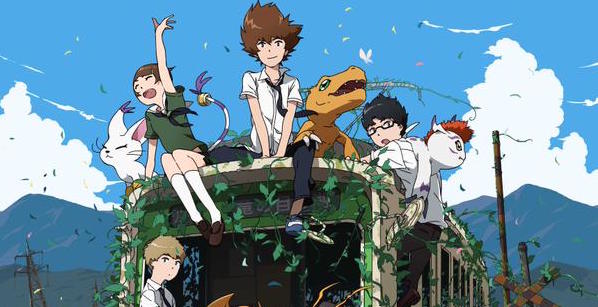
Most anime fans know what Digimon is, but not many are aware of how it started. The best selling electronic device Tamagotchi was released in 1996 (Street, 2015). A year later Bandai released a Digimon Virtual Pet, a couple of years before the release of Adventure in 1999. Like other children’s series in Japan, chances are high that Digimon was created to help sell these Digimon Tamagotchi (Rodriguez, 2014). By the time Digimon came out, Toei Animation had already started and in some cases completed, other hit shows like Sailor Moon, Marmalade Boy, Yu Gi Oh and One Piece. Since Adventure in 1999, six seasons have been created in total. Xros Wars ended in 2012 and the third part is still in the process of being dubbed in the US.
Anyone who keeps up to date with Anime News Network would have heard of the film sequels to the first Digimon series: Digimon Tri. The first film premiered on Crunchyroll on 21st November, so this is a good time to reflect on the franchise monster. If you were born in the early ’00’s, there’s a chance you may have missed the Pokemon and Digimon craze of the late 90s. Like Dragon Ball, Naruto, Inuyasha and Bleach, it is one of those big shows that you will inevitably stumble on at some point in your lifetime.
This article’s aim is to compare and contrast each Digimon series, delve into anime with similar themes, and ultimately try to determine whether Digimon is a hidden gem or something to be shunned and forgotten. I was a fan of this series growing up and have revisited them. To ensure impartiality, this article references Digimon reviews that are written by authors who either did not grow up with Digimon or have not mentioned that they have seen it before. The terminology from the English dubbed version will be referred to the most and the seasons will be labelled as follows: Adventure, 02, Tamers, Frontier, Data Squad and Xros Wars.
Like any franchise with multiple seasons, such as Gundam or Pokemon, the debate of which season is superior is impossible to get away from. If we are examining the opinions of the fanbase, we are no closer to figuring out which series is the superior one even a decade after they aired (Naruto Forums, 2011), but by looking at statistics some patterns can offer a clue. On IMDB the votes for Adventure outnumber later seasons by two thousand and has an average score of 7.7/10. The two later series have high scores but have been seen by a much smaller number of people, sometimes as small as one hundred. A similar trend is on the Anime News Network pages.
One can’t help but wonder if they are less popular because they are terrible, or if Digimon fans simply moved onto better things or something else entirely. These numbers tell us that Adventure is the most popular and remembered season, but not necessarily the best one. If those other two thousand viewers got to vote on the other series, what would they choose? Interest in Digimon has faded over time, but its fanbase still exists on Facebook, the fanart, fanfiction and cosplay community.
There are no major spoilers, but some minor spoilers, in this article.
Artwork
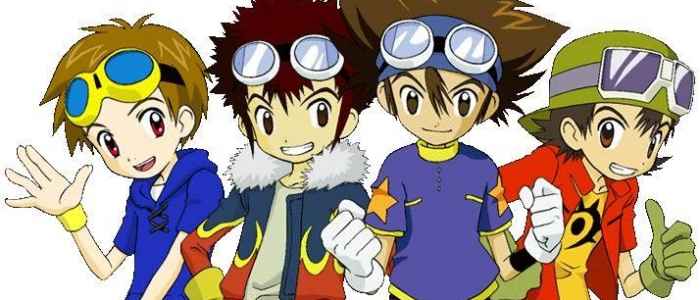
Being a children’s television series Digimon never tried to have great animation and it will likely never be perceived as one that will impress viewers, but there are a number of differences between each series and the movies.
It will come as no surprise to veteran Digimon fans that the first four series in the franchise (Adventure, 02, Tamers and Frontier) had the same character designers: Akiyoshi Hongo and Katsuyoshi Nakatsuru. Hongo is also the original creator of Digimon Tri, so it is nice to see a familiar name in the staff for the movie series. He also came up with the original concepts for a lot of the Digimon series and movies, although his resume does not deviate from much else. There is a conspiracy theory that Akiyoshi Hongo helped create the Tamagotchi under a different name, but no evidence exists to support this (Did You Know Anime, 2014). Nakatsuru’s resume is far more impressive than Hongo’s, as he has also worked as an animator and animation director for a number of other series and movies. Some of these include Dragon Ball Z, From the New World, The Girl who Leapt Through Time, Summer Wars and Toriko. According to Wikipedia, he is well known for being able to mimic the art style of Akira Toriyama, the creator of Dragon Ball.
The character designs for these first four seasons are rather unique as far as anime goes. Fans can recognize them in an instant and effort was made for the cast to stand out. For example, each lead in the series tends to have a variation of messy hair and a pair of goggles. Other characters tend to have a standard, memorable outfit (Sora and Mimi’s hat, Rika’s shirt…etc). The proportions are fairly cartoon-like, with big heads, small eyes (as far as anime goes) and tiny limbs, even for prepubescent to pubescent characters. The adults also share big heads and smaller eyes, although they appear endearing in a similar way to Studio Ghibli. The Digimon themselves, similar to monster orientated shows like Pokemon, Yu Gi Oh, Beyblade and Duel Monsters, differ in their designs. Everyone will have their likes and dislikes. Generally the baby to rookie level Digimon are cute and tiny, perhaps trying to take Pikachu from the spotlight. Compared to other series of a similar vein Digimon designs are memorable and varied.
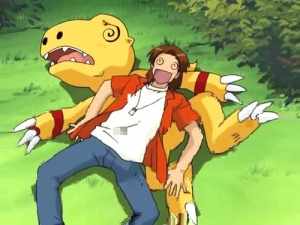
The later series come off as generic and plain, not differentiating themselves from other children’s anime. The character designer for series five was Sayo Aoi. Data Squad may be some of his weakest work, as he has done Key Animation on well received series like Chiyahayafuru, Deadman Wonderland, Eureka Seven, Flowers of Evil and Terror in Resonance. Data Squad designs look closer to a standard anime style, with large, longer limbs, smaller heads and slightly bigger eyes. This was a bold move and had the potential to push Data Squad above previous seasons in terms of visuals. The artwork in Data Squad look unimaginative in comparison to anime for teenage shounen audiences, which is the audience it was competing with.
Even if the designs of the Digimon did not change, they were drawn larger in relation to the humans. Agumon in Data Squad is nearly larger than the main character. Even if it is a different Agumon, this artistic decision makes little sense in continuity terms. Ultimately, there was no obvious benefit to the decision to draw the characters more ‘realistically’ as the material had not evolved in maturity with the artwork. Coloring and background problems make Data Squad Digimon’s worst visual effort.
Xros Wars had designs by Akihiro Asanuma. While the hair bordered the line of Super Seyan eccentricity and the eyes are increased in size, the designs in Xros Wars are a small improvement on Data Squad for a return to smaller body proportions and the other artistic choices that go with it. However, the eyes and foreheads are strangely elongated and the characters won’t look impressive if viewed standalone. There is an exception to this. In Part 3 of Xros Wars: The Young Hunters who Leapt Through Time there was a major character design change, even though it is work by the same artist. This fixed a lot of the problems with the character designs in the first two parts, allowing more similarities with the first four seasons in the eye and face shapes. For this reason, Part 3 of Xros Wars is on par artistically with Hongo and Nakatsuru’s work, the only installment to have done this in eight years.
The last design change in season five and six is made fans sour (Alex, 2011). In every series the Digivice has changed shape, for better or worse, Data Squad and Xros Wars remove any ability to identify the machines as Digivices. Perhaps this is inevitable given our current technological advances, but the Digivices in season five and six look like iPods. A more problematic change is that these Digivices function are like Poké-balls. The Digimon is stored in the Digivice, only to be used when needed. Not only is this unoriginal, it limits a lot writing opportunities as the Digimon can add a lot of entertainment to scenes. Overall, the first four seasons are the strongest as far as character designs are concerned.
The Digimon movies, especially the ones for the Adventure timeline and Tri, have some of the best artistic efforts to date by further refining the characters to mature, more proportionate versions that retain the spirit of the original. Generally speaking the films are better animated than any series although it is more the case for the first generation.
Animation
Other aspects of animation include background art, coloring, movement quality and quantity. As far as background art goes, Digimon is fairly consistent. Highlights include a variety of environments – especially when it comes to the Digital World. Adventure and 02 tend to be on the simple side. Yasue Itsaka and Yukiko Ijima did coloring and background work respectively during the first two seasons which may explain the art similarities. Even though Tamers and Frontier had slightly more depth and shading to the backgrounds, they are only impressive in rare instances. As animating programs have changed over the years, there are different staff for 3D CGI across seasons, and a whole lot of extra hands for Digital Photography in Xros Wars. This could explain the lighting and blending effects for the backgrounds in season six, which look similar to Bakemonogatari. In Xros Wars: The Young Hunters that Leapt through Time the backgrounds often exceed the quality of the character models. The combination of the re-worked character designs, color choices and background art make the series have more visually in common with Concrete Revolutio than Digimon. At times the variety of places in the Digital World coupled with the range in coloring makes the images off putting, which makes color composition one of the most important aspects when considering the visuals of Digimon.
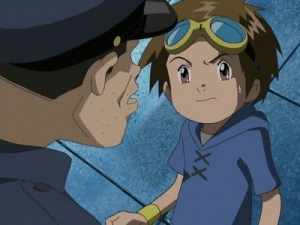
Tamers succeeded on looking quite pleasant throughout its run because it was set in Shinjuku for a large portion of the show. Many cool colors such as blue and green are utilized to great effect, especially in the darker scenes involving the organization Hypnos. In Adventure and 02 the success of color composition depended largely on the location of the characters, so it is overall average. As mentioned in the art section, Data Squad‘s animation efforts are strongly undermined by the poor use of color composition. It cancels any emotional impact of scenes and impedes the series ability to create mood, especially when it comes to DATs. This organization is colored in bright yellow and fluorescent green, among other bizarre combinations. Hypnos in Tamers is far more believable in concept and intimidating in its presentation.
In Xros Wars the saturation of colors appears even brighter than Data Squad, although the hues match more often than not. While this is greatly improved upon in Xros Wars: The Young Hunters who Leapt through Time it still doesn’t match the tone in Tamers, although it comes close. In the first film of Tri, the color saturation is distractedly bright for outdoor backgrounds, but oddly enough indoor locations and the characters don’t have this problem. Using color composition to affect tone isn’t a concern if viewers just want light entertainment, although older viewers may find the experience lacking.
Quality of animation throughout Digimon is on the whole average, with some scenes better than others. The fight scenes are what attract most audiences to Digimon and these vary between being smoothly animated with lots of movement, to unimpressive stills, pans or black screens with slash lines. If one is after consistency in animation quality, the best places to turn are the Digimon movies where fight scenes are smoother. This is the strongest in the films, although Tri confusingly suffers from choppy fight scenes. It is unclear at this point if this will be fixed for DVD release. The well blended 3D and 2D animation in Xros Wars made the fight scenes succeed in being rather fluid in comparison to earlier seasons, although they are still littered with stills. On the whole if one is looking for a well animated fight scene the Digimon television franchise only slightly improves over series for the same target audience, like Monsuno.
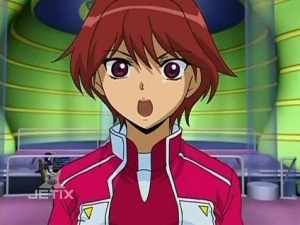
Like Card Captor Sakura, Gurren Laggaan or Sailor Moon, Digimon is notorious for having transformation and attack sequences. These are called Digivolution sequences where a Digimon changes or improves its form. Since these sequences can happen up to multiple times an episode, examining the quality and use of them is important. Adventure had a fairly repetitive form of evolution. The Digimon change in a flash to its new form, even if this was made more interesting and varied at higher stages. Other series used Digimentals and cards to promote evolutions and these have varied visual effectiveness. Tamers has the most detailed evolution sequences as each change to a limb or body part is animated from start to finish. The evolution to Mega involved the main characters merging with their Digimon. While a very strange idea, these sequences are beautifully animated with vibrant use of lighting effects and fluid movement.
Data Squad, Xros Wars and Tri returned to the humble origins of Adventure, although improve on the aesthetics a little by more effectively combining the 3D and 2D animation. They don’t do anything new, but are by no means terrible. Frontier is the most unique compared to the other series as the main characters become the Digimon. This has been met with a great deal of criticism (Carter, 2013), and the series as a whole abuses transformation sequences the most (Clerk, 2015). Generally speaking the 2D evolution sequences are more impressive and aesthetically pleasing since the 3D (sorry fans of WarGreymon and MetalGururmon). The exception is in Xros Wars and Tri where the programs had improved enough to make the blend nicer.
The first three series boast some of the strongest animation in the franchise, with Tamers coming out on top for balanced use of coloring and lighting effects, especially in the use of evolution sequences. The Digimon movies have more detailed background art, extravagant fight scenes and fluid animation, although watching them by themselves limits character information, so is not recommended for a first time viewer. Despite choppy fight scenes and simplistic, overly saturated outdoor backgrounds in Tri, it still improves on the television series aesthetic. Xros Wars: The Young Hunters that Leapt Through Time is the first Digimon series in nearly a decade to present a distinct and pleasing visual style, exceeding past works in background art and blending 2D and 3D animation. The staff for Tri appears promising and could improve on a lot of the animation problems the series have. The next important aspect when deciding on the best series is the degree of US censorship and edits.
The Japanese versus American Edit
The version of Digimon aired to Western audiences was very different compared to the Japanese counterpart. In some instances this has reached Card Captor Sakura and Sailor Moon levels of injustice, but the adaptions are not nearly as bad as they could have been. For one, even though the names of characters and Digimon have been changed, there are remains of the original Japanese names. For example, in Adventure Takeru Takaishi was changed to Takeru “T.K.” Takaishi. Some of them kept their Japanese names, like Joe, Sora and Mimi. These alternations make sense, as it allows children to be educated and understand the structure of Japanese names and makes pronunciation to be slightly easier. It is clear that a decent effort was made to be faithful to the original material. According to the Digimon Wiki, the name “Henry” used in Tamers is a transliteration of his Japanese name. The reasons are not obvious as to why a few of the Japanese names were changed to a different Japanese one, like Ruki to Rika, or Makino to Nonaka.
In contrast, many changes of the Digimon names are completely unnecessary, such as Tailmon to Gatomon. Terminology makes even less sense, such as Chosen Children to Digidestined, or even attack or episode names (Gear, 2015). In the case of 02, Digimentals is the proper (and much better name) for Digieggs, and in Tamers each card used had a different name, but was simplified in the dub to status improvements you might see in Pokemon. It would have just been quicker and easier on the part of the translators to keep a lot of the Japanese names. This aside, there are a lot more dialogue changes than violence censorship.
Dialogue changes are quite obvious when you look at the scene featured below. The language is more colloquial and there are internal monologues added in. These changes are very common in Digimon US versions (Gear, 2015), although adapting the Japanese language to be more Westernized has often been considered an appropriate writing choice, so long as it isn’t over the top. These have been met with a lot of criticism on Digimon Uncensored, and rightly so when jokes fall flat or the characters dialogue is uncharacteristic.
Carlos Ross from THEM Anime Reviews said that the Frontier dub version in particular “is painful”. However, there are a number of jokes in 02 and Tamers that work well, and some of the internal monologues help add meaning to scenes, so perhaps it is not a complete loss. Melissa Sternenberg from THEM mentioned that Adventure is “much better than most people give it credit for” and Carlos Ross adds for 02 “Some parents may like it enough to watch it for themselves”. In episode seven of Adventure, there is a half a second shot of Joe using a knife to cut a rope which is removed (MachoDuck, 2013). There are other small changes like these throughout. These sorts of changes seem ridiculous now, but it is likely censorship practices were more strict at the time, similar to Sailor Moon. Conforming to the censorship board may have been the only way Digimon was able to be brought over to the West (ANNCast, 2014).
By the scene above it is very difficult to tell if the American edit changed the color levels of the scenes, or if that is just a result of using two videos of varying quality. If the colors and lighting were changed that would be complete unnecessary, considering the Japanese colors are far softer and distinct. As far as Tamers goes, the series has had a lot less censorship than the other series. The only notable ones are in episode three and twenty six where there was ambiguous imagery that could be interpreted as sexual, and some blood. All things considered, as far as actual sections of the episodes being cut out, Digimon fared much better than Sailor Moon or Card Captor Sakura, even if most of the changes are still largely unhelpful.
The largest change between the US and Japanese versions of Digimon is the soundtrack. Voice acting aside, this is an area which seems to have the most consensus among fans, even those who grew up watching the US version. Every single opening sequence and song was changed, and nearly every single insert song was omitted. This would have been acceptable if the opening songs had some resemblance to the original, like the US Sailor Moon theme song. This is not the case here. Instead we got a simplistic, catchy, yet repetitive theme of “Digimon, Digital Monsters, Digimon are the Champions!” put against a montage of clips from the series and original Openings.
This song has been translated into a multitude of other language versions, including French and Spanish. Frontier, Data Squad and Xros Wars came up with entirely new songs with an attempt at lyrics although they are generic, forgettable and dripping with cheese. The brilliant Wada Kouji did the original opening songs for the first four seasons of Digimon, while the ending songs tended to have a different artist. These are generally adored by fans everywhere for the catchy, fun j-rock tunes with wonderful vocals.
The background music for the Japanese version of the first four series were composed by Takanori Arisawa. They have some beautiful melodies, especially in serious scenes where a single violin is used. There is no doubt that Arisawa’s work on Digimon is brilliant and easily surpasses a lot of children’s or even serious anime today. Sadly he passed away in 2005 which is why the music has been handled by someone different in Data Squad and Xros Wars. In contrast the US soundtrack was composed by five individuals for Adventure and 02. In Tamers the staff were changed slightly, while retaining two of the original composers. The use of sound is substantially different in each version. The Japanese builds atmosphere dominantly by the use of sound effects, while the US version relies on its score and extra dialogue to carry scenes. This gives the Japanese a more eerie feel where the US can come across as trying to fill up as much silence as possible.
Unless one has a preference for use of sound effects over music, there is no reason why the US version of the score is any less than the Japanese. The US edit could be seen as more appropriate at intensifying the mood for some fight scenes, however at other times the music quality is so similar there was no reason to change the original, especially with insert songs. The only exception to this rule was the dub of the insert song “Promise” from the movie Runaway Digimon Express. The tune for the song and translation of the lyrics were, although not identical, fairly similar.
Of course there’s also the english dub. The cast is generally reused throughout each series. For a handful of the voice cast Digimon was used as a springboard for greater work. For example, Michael Reisz who voiced Matt in the English version had only worked on Vampire Princess Miyu and Godzilla previously. Brian Beacock, who voiced Takato in Tamers, still looks back on the experience fondly and considers Digimon his first major voice role (Edwards, 2015). While the voices for the characters definitely did not sound authentic to the character’s ages, the performances come across as quite natural and believable most of the time. This assists with the humor and adds meaning to emotional scenes. That being said, some of the Digimon’s voices can sound grating although it depends greatly on the Digimon speaking.
In Data Squad, there is an uncharacteristic but very pleasant surprise to hear Crispin Freeman as one of the main characters. The combination of puns and flat writing make the US version for Xros Wars especially frustrating, like the overuse of the word ‘awesomeness’ by the character Jeremy. If you thought the other US adaptions were bad, just let it be a testament to how much worse season six is.
Even though there are positive aspects of the US adaptions like the different background music, some parts of the writing and voice acting, the variations between the two are still so great that it is recommended that new viewers start with the Japanese version, and then go back and look at the US version afterwards if they are interested. The only exception to this rule is the english version of Tamers which has minimal censorship. Sadly, the Japanese may be difficult to come by in a legal format as many of the original masters have been damaged over time. For the Australian DVD release multiple masters were used in order to release a quality video product. Tri is unique because it is the first ever legal, non censored version of the Digimon Adventure timeline, so it has a lot of value on this aspect alone. The Japanese version of Xros Wars and Tri are available for free on Crunchyroll for curious viewers.
Story, Characters & Themes
The key good versus evil conflict of Digimon is present across all six seasons, but its the execution, details, characters and themes that make each installment different. The popular travelling to another world device has been used in many anime like The Vision of Escaflowne, The Twelve Kingdoms, Inuyasha, Sword Art Online and Now and There, Here and There. Digimon differentiates itself from the previous titles by examining humanities use of technology. The Digital World is basically the internet, although there is cross over with video games and computer networks. The amount of time spent in the Digital World versus the real one varies, but the ultimate purpose of the series is to tell a good versus evil story with themes about the importance of friends and family. The idea is to cram as many cool fight scenes into the series as possible while making you care about the characters and their journeys at the same time.
Episodes tends to be structured around the Digimon evolutions. Usually, but not always, character detail or development will coincide with these, usually later on in the season. There will be an episode per Digimon concerning each level of evolution, usually in a Monster-of-The-Week format. These can be humorous or dramatic. Depending on the number of characters this can take up to seven episodes per arc. Generally it will end with the destruction of an evil Digimon and the cycle starts again, building up the strength of the enemies for a “Save the world!” finale. These are usually built up to quite effectively thanks to use of music and character conflicts, at least more so than This Ugly Yet Beautiful World.
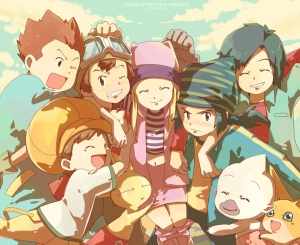
Digimon is not supposed to be a masterpiece or deep. It has always been a means for B level entertainment and it achieves this in its higher quality installments. In 02 the Digimon Emperor is an interesting villain, but the mystery as to his identity is not made secret and the epilogue had a very negative response (Russell, 2015). In Tamers the pattern is changed substantially. There is more of a Monster-of-the-Week theme until episode 23 when a program created in the organization Hypnos is destroyed.
The series is still structured around Digimon evolutions although the beginning and end of story arcs are not as clear, especially since only a small portion takes place in the Digital World. The physics of the Digital World are explained in the most detail in Adventure although Tamers adds an origin story. Even though additional information was given in 02, a lot of viewers disliked these changes for being contradictory and self-defeatist. In later seasons a lot of the knowledge is assumed. The most interesting villains are seen in the first part of 02 (Russell, 2015), Tamers and the later part of Frontier. Sadly, Frontier received criticism for the large number of fillers and executing fillers poorly (Carter, 2013).
Data Squad involved an organization called DATs that keeps a close watch on Digimon. Since similar ideas are explored in Tamers but more effectively, the story of Data Squad is completely negligible. Xros Wars uses similar Evolution gimmicks at the second half of 02, although it is split into three parts. The Digital World is split into zones, something which deviates it from previous seasons, and the dynamics are solely on fighting tactics and strategy. Similar to many video games, like Super Mario 64, there are stars that can be collected in each zone with power granted to the child that collects them all. Xros Wars is the only series that is longer than 50 episodes. Its third part has a year gap in the timeline and involves some aspects of time travel and dimension jumping, including a cameo of all the main characters in one of the final episodes.
While the style of Xros Wars: The Young Hunters that Leapt through Time are nothing like the first two parts of the show, it still does not do anything original or new. Here, the Digital World takes place in sections of Quartz – a plot device awfully similar to Eureka Seven AO, a comparison no one should have to make. There is so much of a focus on ‘hunting’ Digimon and storing them in the Digivice that the series is an example of what Pokemon should be doing with its story, rather than something that belongs in the Digimon franchise. If readers are wondering if one can skip straight to episode 55 of Xros Wars and start watching from part three onward, this is a solid idea and one I recommend. Since the main character of this series is Tagiru, all of the concepts, characters and story points from the first two parts are explained over again, as well as the new story changes to this season. One can slip into this part of the story relatively easy. For all intents and purposes, this final section of Xros Wars should have been labelled as series seven to draw in a wider audience, even if it is only 25 episodes.
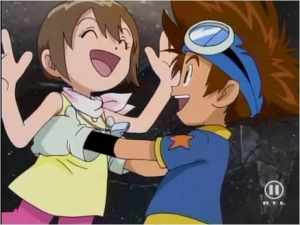
The story of Digimon is so straight forward a big part that make each series stand out are the characters and the execution of the themes. As far as unique, memorable characters go Adventure, Tamers and Frontier seasons are particularly strong. In Adventure there is a lot of focus on Tai and Matt’s rivalry, especially in the different ways they treat their younger siblings. Additionally, the relationships between Tai and his little sister, and Matt and his little brother are explored. These are some of the most dramatic and realistic aspects of the series.
There is often more than one motivator for behavior and this is made very clear in the series, as Matt and Tai find themselves in awkward internal conflicts. In 02 the characters are briefly touched upon, although they can been seen as pointless and reworkings of traits seen in the first series run (Sanders, 2015). Tamers only has three to five main characters so it allows more time for the relationship between their Digimon to be explored. While there are no reoccurring fights or rivalry, Rika and Jeri’s family situations become significant at varying points throughout the series. The show has been praised for the darker aspects, interesting characters and bittersweet ending (Russel, 2015). In Frontier, like in Adventure, there is an importance in knowing who your family is and feeling like you belong to a group. It has been praised for its character development but criticized for its filler (Carter, 2013).
Data Squad has a lot of problems with its characterization. The main character Masaru is very impulsive and uses violence at every opportunity. Not only does this make him a hideous role model, but even when the show tries to rationalize this by a revelation near the end of the series, it doesn’t encourage Masaru to change his approach or reflect upon his actions. There are very minor details for the other two main characters littered throughout the series but the result is ultimately a bunch of archetypes with little to no memorable qualities. The focus in Data Squad is dominantly on the action and story aspects, which are average to begin with and do not make for compelling viewing.
It isn’t just the duplication of Hypnos which is a major flaw in the writing, but the execution of other story elements (Ledura, 2012). The writing and dialogue at the beginning of the series, especially episode two of Data Squad, are so similar to Tamers it is almost copied word for word. When Masaru meets Agumon he tries to sneak it into his house…. with the cardboard box trick. Again. A few minutes later the dialogue between Masaru and his Mum is also so outrageously similar to Tamers that it is embarrassing. Not only that, but Agumon’s character is a replica of Guilmon with the obsessive focus on food. Xros Wars is incredibly plot driven as well, disregarding the qualities about Digimon that made us care in the first place. Even in Xros Wars: The Young Hunters that Leapt through Time it is sadly not much better. Only the most superficial details of characters are made known the viewer, like the fact Taiki likes basketball. The third part of season six may be entertaining to those who just want mindless fighting, but this narrows the target audience to children.
Lawrence Van Gelder (2000) criticized the US Digimon Movie that the meaningful aspects of teamwork and friendship have been displayed more effectively in other media. Considering this was just based off the movie this argument is quite weak. Pokemon focuses on these same themes, but the characters are explored more frequently in Digimon. The negative aspects of Digimon interacting with humans is made very clear in many moments throughout the franchise. For example, evolutions going wrong and Digimon being mistreated. In Pokemon any character development is a rare occurrence. Digimon’s character exploration is on par with most shounen series and it does a decent amount in its 50 episode time frame. Voice actor Brian Beacock, who has worked on multiple Digimon seasons, says he prefers Tamers because it displays a wider emotional spectrum and is more than just yelling (Edwards, 2015). The animation and sound aspects are stronger in Digimon than other anime created to sell toys. The episode length is also shorter, the plot more concise and the characters meaningful, even if the evolution and story are especially silly when overused.
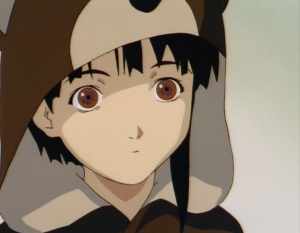
Series like Serial Experiments Lain, Ghost in the Shell and Chobits show a mature and serious look at humans relationship with the internet and technology, but they deal with material which is probably too dark for a children’s series. As far as the scary aspects of the internet go, Tamers displays this the best thanks to the writer Chiaki J. Konaka who also worked on Serial Experiments Lain.
Many artistic and story choices are drawn from Lain. The use of Hypnos versus the Men in Black is the most obvious one, with facial expression, use of color, imagery and villains being more subtle. Tri appears to be using a similar Hypnos-esque plot element like in Tamers, but it remains to be seen if it will become as dark as the third season. So far it has succeeded in making Data Squad look even less relevant by executing similar ideas in a more believable and interesting way. The most similar anime to Digimon is the movie Summer Wars, not only because The Digimon Movie was used as a starting point for Hosoda’s film, but for the themes of family, friends and thrilling fight scenes. It is a quick way to show a newcomer what Digimon fans love about the series. It certainly does better than other children’s series at constructing a reasonably believable world – in the first number of seasons, anyway.
If you managed to make it this far, with varying animation quality, story, villains, characters and stylistic choices it can make the decision of picking the ‘Best’ Digimon series difficult. Overall the most consistent in displaying the high points of Digimon would be Adventure and Tamers. If possible, Adventure is recommended to be seen first in Japanese in order to appreciate the original music, names and sound effects of the series, although given limited availability the English version for Tamers has far less censorship and an effective musical score. Drake (2013) considers the third season to be “not just for Digimon fans”. Data Squad and the first two parts of Xros Wars are not recommended because of its artistry and writing problems. Xros Wars: The Young Hunters that Leapt through Time is a well animated example of how Digimon has changed over the years, but it is a different beast to previous installments.
Digimon Adventure, Tri and Tamers are still relevant today as a high quality anime for children and solid action/adventure series that stands above other anime made to sell toys. They are certainly not worth dismissing at first glance, and if nothing else it can fill in some anime history gaps as Digimon is a franchise that influenced many anime fans today. Apart from those two, if Digimon is not one’s cup of tea, viewers may be interested in Selector Infected Wixoss (2014), a 12 episode character-driven anime based on females playing a card game.
Works Cited
Alex. (2011). Review: Digimon Xros Wars (1-30). Retrieved 31st october 2015 from: https://meepinganime.wordpress.com/2011/03/12/review-digimon-xros-wars/
ANNCast (2014). Parliament Funkadelic. Retrieved 27th October 2015 from: http://www.animenewsnetwork.com/anncast/2014-08-15/.77636
Are Digimon’s original masters no longer available? Madman Entertainment message boards. Retrieved 1st November 2015 from: http://madboards.madman.com.au/viewtopic.php?t=28843&start=0&postdays=0&postorder=asc&highlight=digimon
Carter, R. (2013). A Digimon Power Rangers lovechild? Retrieved 27th October 2015 from: http://www.giantbomb.com/profile/raycarter/blog/a-digimon-power-rangers-lovechild-the-digimon-fron/102784/
Clerk, M. (2015). Digimon frontier. Retrieved 27th October 2015 from: http://animeenglishdubreviews.blogspot.com.au/2015/02/digimon-frontier.html
Did You Know Anime. (2014). Digimon – Did You Know Anime? Feat. Joshua Seth (Tai) [Youtube video]. Retrieved 27th October 2015 from: https://www.youtube.com/watch?v=8C6VYxIhqcQ
Digimon Tamers: US vs Japan, Retrieved 27th October 2015 from: http://www.angelfire.com/anime5/thelair/03usvsjapan.html
Digimon Wiki. Retrieved 1st November 2015 from: http://digimon.wikia.com/wiki/Henry_Wong
Drake (2013). Digimon tamers. Retrieved 27th October 2015 from: http://animesecrets.org/digimon-tamers/
Edwards, M. (2015). Interview with Brian Beacock [Youtube video]. Retrieved 27th October 2015 from: https://www.youtube.com/watch?v=FZh4bT37oEw
Gear (2015). Digimon Uncensored. Retrieved 27th October 2015 from: http://www.digimon-uncensored.com/uncensored/
Ledura, A. (2012). Review/Summary- Digimon Data Squad AKA Hell. Retrieved 1st November 2015 from: http://zeonbelial.deviantart.com/journal/Review-Summary-Digimon-Data-Squad-AKA-Hell-335030445
Machoduck (2013). 07- Roar! Ikakkumon. Retrieved 27th October 2015 from: http://www.digimon-uncensored.com/uncensored/archives/game-review/0107
Naruto forums. (2011). Best and worst series of Digimon? Retrieved 27th October 2015 from: http://www.narutoforums.com/showthread.php?t=708114
Osmond, A. (2011). Neo Magazine issue 82.
Pixelmood. Digimon. Retrieved 5th November 2015 from: http://www.tamatalk.com/pixelmood/digimon.htm
Rodriguez, K. T. (2014). Digimon adventure history and review. Retrieved 27th October 2015 from: http://www.examiner.com/review/digimon-adventure-history-review
Ross, C. Digimon Frontier review. THEM Anime reviews. Retrieved 27th October 2015 from: http://www.themanime.org/viewreview.php?id=560
Ross, C. THEM Anime Reviews. Retrieved 27th October 2015 from: http://www.themanime.org/viewreview.php?id=232
Russell, M. (2015), Rerun review: Digimon adventure 02. Retrieved 27th October 2015 from: http://ap2hyc.com/2015/10/rerun-review-digimon-adventure-02-2000/
Russell, M. (2015), Rerun review: Digimon Tamers. Retrieved 27th October 2015 from: http://ap2hyc.com/2015/10/rerun-review-digimon-tamers-2001/
Sanders, L. (2015). Digimon Marathon: Digimon adventure 02: “Why can’t we send in the competent ones?”. Retrieved 27th October 2015 from: http://blasterreviews.blogspot.com.au/2015/02/digimon-marathon-digimon-adventures-02.html
Street, J. (2015) Tech #Throwback Thursday: Remember the Tamagotchi? Retrieved 27th October 2015 from: http://www.theblaze.com/stories/2015/03/05/tech-throwbackthursday-remember-the-tamagotchi/
Sternenberg, M. THEM Anime Reviews. Retrieved 27th October 2015 from: http://www.themanime.org/viewreview.php?id=849
Van Gelder, L. (2000). Film in review: Digimon the movie. Retrieved 27th October 2015 from: http://www.nytimes.com/2000/10/06/movies/film-in-review-digimon-the-movie.html
Wikipedia. Toei animation. Retrieved 27th October 2015 from: https://en.wikipedia.org/wiki/Toei_Animation#1990s
What do you think? Leave a comment.

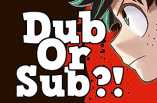
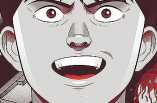

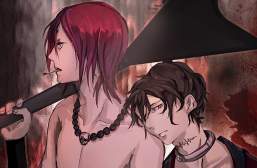
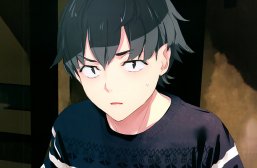
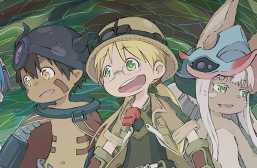
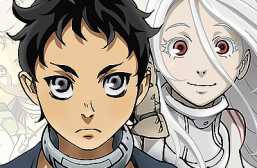
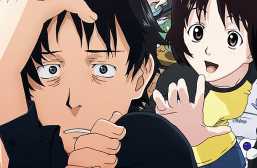
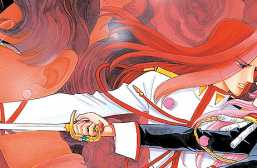
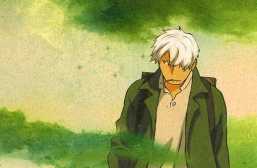
Best thing about digimon was the awesome theme song! I showed it to my wif the other day cause she didn’t watch it as a kid an loved it (The show she thought was ok) but that theme song!
Digimon Data Squad had the older cast which was cool.
I remember one of the last Digimon Adventure 02 episodes having a short but meaningful scene… Malomyotismon put the kids in illusions which illustrated their deepest desires, and T.K.’s desire was eating dinner with his whole family (as his parents were divorced). Even though I’m not a child of divorce myself, that always struck me as being simple but powerful. Showing the effect that one’s parents’ fractured relationship has on him/her was unique in my eyes for a show targeted at younger children.
Indeed. Family seems to come up a lot in Digimon and it is great that they tackle divorce as a subject.
I still liked Pokemon more as a kid. Loved both, though.
Didn’t really like Digimon after season 2, but those first two seasons and the Digimon movie were better than anything the Pokemon series had to offer.
I was actually talking about this with my friends last night. Obviously, the Pokemon games trump Digimon, but I think the first few seasons of Digimon were awesome and much better than the Pokemon anime, which wasn’t very good to begin with, IMO.
The Digimon anime was far more engaging than Pokemon. Much better plot and everything.
Going wild with nostalgia! Thanks for the retro look at my favorite franchise!
One thing that really annoyed me (and I’m sure annoyed many others) about the show was the lack of constancy. In Pokemon (bad exemple, I know) Charmander will always evolve to Charmeleon. That didn’t seem to be the case with Digimon and both names and characteristics were changed along the seasons so much it was impossible to keep track. About the so called ‘best’ season thought…honestly, to me, it was season 4, exactly because they got rid of the digimon-partner thing. I know, I know people will hate me for writing this but what can I say?
I always thought the ‘go fight while I cheer on the sidelines’ kindda boring. Season 2 for me was the worse. The new digidestined added nothing except for crying when a digimon died, thing the original digidestined never cared much about and rightfully so. But, anyway, awersome article. Who knows? Maybe a new season will come around and make we all fall in love with Digimon again. One thing is for sure, it will happen way before Ash becames a Pokemon master.
I agree – The Digimon’s evolution would change depending on the crest and it was hard to remember every evolution. I also liked season 4, because I thought it was cool to change into the Digimon itself. But of course, everyone has their own opinion!
I think the lack of consistency with evolutions helped make the show interesting, but I can see how it would get frustrating. I was never bothered by the “cheering from the side lines” gimmick. While it could get repetitive it added an extra element of danger in cases where the Chosen Children could die from standing so close. Perhaps I had grown too accustomed to watching Pokemon in my youth. Thanks for your comment.
Every digimon season they add something new which I think is cool.
I love Digimon. It was one of my first animes to watch as a kid, and Im glad that it still holds up today. Great article
Thank you! It was one of my first anime as well, probably my second after Pokemon when I was in second grade.
A truly superb article on my favourite franchise. You’ve given a good, balanced view here which should be applauded.
On a personal note, I grew up with the first three seasons and now have watched all the dubs available back to back with my own kids (one is too young to keep up with subs). It’s still so enjoyable to watch. The whole family is in agreement that Tamers was by and far the best of the franchise too so that was nice for me to see.
Again, well done on a great article.
I admire you for making your kids watch Digimon! If I ever have children I will no doubt try to see if they like it. It’s also fabulous that you still enjoy watching it. I used to have it on the TV in the lounge room and my parents would laugh at a large portion of the jokes. It definitely isn’t just strictly for children. Thank you so much for your positive feedback. I worked very hard to make my view as balanced as possible, so I’m pleased to see it wasn’t for nothing.
You really did do a great job. I think that knowing that kids today still enjoy it as a franchise is a testament to its quality too. I do still need to watch Tri though. I must some time aside for that.
Exactly, if kids can look at it now and still enjoy it, its a very good sign it is still quality. I know for myself I couldn’t get into half of the movies and television shows my parents used to watch. Tri only just came out and will be available for non-premium members the 26th of November, so you’ve still got some time to prepare. I’m sure your kids will love it!
Another thing that I liked was that it touched on things like parental separation, loss (my word Wizardmon’s death was heartbreaking), depression, morality and so on where most western kids shows at the time didn’t (maybe Animals of Farthing Wood did to a degree, at least with death) to the same degree.
Excellent. I am very much looking forward to Tri 🙂
I on’t suppose you know if Tri is set before or after Digimon Adventure Anode/Cathode? I’m jsut wondering if Ryo is likely to appear, as he’s the one that ties Adventure and Tamers together as timelines.
I’m not sure if Ryo will appear. Tri takes place after Adventure. Its unclear by the first film what has happened to the 02 characters and timeline. They might have changed it or Tri takes place after 02 but before the epilogue (obviously).
Digimon will always hold a special place in my heart because the writing was witty. I remember watching Digimon Adventure up to Frontier as a youth. But I started to feel such a disconnect, maybe some of it age, but mostly because the concept and interaction between human and Digimon became way too different. After so many modifications you hope to see a return to the original recipe. At least, I do. I can always go back and enjoy the Digimon movie for the soundtrack and writing (the 4Kids TV version….though it WAS a mashup of 3 movies, it’s a fond childhood memory.)
Thank you for your thoughts. I saw the Digimon Movie mash up for the first time in 2011 and I loved it! It definitely stands up in time.
I’ve watched the first 5 seasons within the past month after becoming morbidly curious about the series. And you know what? I like ’em! I think 02 fumbled some stuff, and Frontier went the wrong way, but besides that, what killed the fanbase here in the west was the lack of foundation. Yu-Gi-Oh had the card game, Pokemon had the video games, but Digimon’s foundation WAS the anime. And since that wasn’t consistent, it ultimately fell off.
Wow, you should get an award for dedication! I can’t imagine how you managed to watch 250 episodes within the space of a month. That kind of watching experience would kill me. Did you have a favorite besides noting that 02 and Frontier are the most flawed?
Tamers, season 3 is personally my favorite because we can relate to it. In that season Digimon is just a game, and a tv show, just like in real life. It also seems so realistic cause when a Digimon dies they DIE! They don’t get to become a digi egg and wait some time for them to be reborn.( although I do like that) Also the main “villain” towards the end was basically a virus, that deleted Digimon. This season to me is the best season, I just loved it. Watch it once a year. Will never forget Beelzemon killing Leomon then pulling off a “fist of the beast King” on the D-Reaper.
I definitely agree with you there. Tamers changing the setting and making the Digimon die made the tone completely different to other series, but in a good way!
Part of my childhoodright here.
This was a nice nostalgia trip, thanks.
Glad you enjoyed it!
Digimon > Pokemon.
Don’t get me wrong I love Pokemon but Digimon is clearly the better of the two.
If you’ve seen Hope Chapman’s Digimon article on Anime News Network she perfectly describes why Digimon has stood the test of time more than Pokemon has. I recommend you check it out.
I liked the Digimon series that I watched, especially the movie with the cyberspace villain!
Savers had best fanservice.
1.-tamer
2.-adventure 01
3.- Savers
4.- adventure 02
5.-Xcross wars
6.- frontier.
Great theme, great characters, good animation, have some great moments!
ITS A MUCH WATCH!
Digimon Tamers is darkest and imo the best Season in the Digimon and best anime for kids
I remember this digimon was pretty dark.
The first digimon was darker too, the dark saga was awesome puppetmon was messed up
Man digimon season 3 was unbelievably dark but thats why its my favourite season. But when Leomon dies and that girl slowlt descends into madness man that was really heavy stuff.
the biggest problem of digimon in US was: Music! in germany they took the original music gave it a german text and u fealt every digivolution, while in the english version u had 1song for 3 seasons and it was used for digivolve AND intro.
Definitely with you on that one, Soulmate.
watching the first digimon movie gives me all sorts of confusion because I’ve already heard of the Singapore version of the english dub with JP op and all, suddenly what all of this name change and such in the movie, well that was a unique experience
I personally loved Digimon Tamers; its tone and atmosphere was perfect growing up in junior high in the early to mid 2000’s.
Digimon is literally one of my favorite series I still rewatch Adventure 1 and 2 like once a year haha…..till I get mad that Taiora never happened.
Has anyone charted the comparisons between money invested in this franchise and its popularity vs. other anime productions?
I would love to find out but information on anime budgets isn’t easily accessible.
I recently watched the original Japanese version of Adventures, and having watched he American dub as a kid, it was almost like a different show. Not that it’s necessarily a bad thing. If the show was made for kids then it’s not really a big deal to me if it’s more childish in tone, it’s just really interesting to me how different it was.
I loved those little electronic pets! I think I may have been too old for Digimon though. Would it be enjoyable to an adult? I actually prefer to watch subtitled anime. I really hate when they change anime to meet censorship standards here. Do you think this happens less with subtitles vs. dubbed? Or does it still happen a lot and should I just learn Japanese haha.
The first season of Digimon was bullshit, horrendous character design and a really lazy story. I liked the fact Savers somehow followed the logic presented on Tamers, because Digimon is not some sort of magical thing like…. I dunno Monster Rancher? (the anime, the games were more decent to my taste) So you somehow get chosen by your capabilities (like the Men In Black movies) to then discover a new reality, in tamers a Digital realm created by humans, in savers a separate dimension somehow dependant on the “human world”. But then again for every Digimon review/discussion only the original materials should be taken in consideration, since in the dubbings they normally add unnecessary things or simply “kill” the characters (compare Digimon Xros Wars characters with the american dub fusion’s characters). To finish since Digimon are digital life forms is better and more appealing to require the power of science like you call it to have some sort of contact with them, or at least that’s how everything sounds logical to me.
Tamers was better than Adventure.
I didn’t watch Digimon beyond the first series/season, but I’ve always preferred Pokiemanz
Digimon has been a staple in my life for always, I’ve even still got the old Digimon Dusk DS game!!!
Digimon had some serious innuendo that i never realized as a child
Digimon Tamers and the original Digimon is still the best!
Digimon was awesome when it first came out .
Wow, this is a very thorough look at Digimon. I definitely feel a bit of nostalgia; I watched the show in the evenings while I was in elementary school. I can’t even recall how many seasons I flipped through, but it was definitely a large part of my childhood, as well as my introduction to an anime series. I like how you looked at the composition and animation. Because I was so young, I didn’t necessarily appreciate the finer details. I found the characters and stories easy to follow, which allowed me to have fun with the show. Awesome job!
Thank you for your feedback. I was the same, I used to tape this show in the mornings when it was on TV. Good times!
Jordan!
You certainly know how to bring back the nostalgia. I had no idea the show took so much of its art style from other ainme and was so similar to other Anime as well.
That being said, the original three seasons (and the season with DIgimon Savers) are my favorites. Ranked 1, 3, 5, 2.
Xros wars is okay, I still would rate it higher than the 4th season.
Cool, I’m glad you liked the article. 😀
One thing that I really loved was that this series wasn’t just about action or cool monsters, but about heart and character development. You always hear people say that “Pokemon is cooler than Digimon because its still going on.” But honestly they can’t really be compared.
All of the characters in Digimon dealt with immense conflicts such as trust, hope, and believing in themselves. Some characters came from backgrounds and dealt with family separation or adoption. All of which gave the story more volume as it wasn’t focused on the mind or dive of a single character but of all the protagonist.
Thank you for this article! I only watched Adventure, 02, Frontier and now Tri (I still have to watch tamers) and I gave up after few episodes with the new series and I wondered why I didn’t find them appealing, now I know.
I never watched Digimon in English, but in Italian when it came out and also few years later, and in Japanese on Netflix two years ago and I noticed what you said about the music and different dialogues (and different names too!)
Now I think I should really try Digimon Tamers!
Yes, definitely try Tamers. I’m not sure but I think the Italian version was adapted from the US? I think the soundtrack, etc are similar. Let me know how it goes.
Your Dub Nostalgia bias is clearly showing! Digimon adventure has one of THE most unfaithful dubs i’ve ever seen in my life, in fact THIS dub is what FORCED me to start watching subs.
I used to be a vehement dub exclusivist i avoided sub like plague cus i’m not comfortable with foreign languages BUT when it came to digimon one of my childhood shows i couldn’t bear to witness it being butchered to this degree!
You know what? i could’ve been FINE if they changed all their names and just called them “Taichi/Travis” “Sora/Sara” etc etc censored all Japanese stuff like 4kids it doesn’t really change anything! what REALLY matters is the script,music,acting&characters and BOY does the dub screw up all it ROYALLY!
“there is no reason why the US version of the score is any less than the Japanese”
What ARE YOU JOKING MATE!? US track is not in sync with the scene whatsoever,its disharmonious and doesn’t build any tension and it kills the mood cus its too random. Digimon is meant to have that silent build up,ambient mood and tension Digimon was NEVER meant to be a noisy 90’s cartoon like Talespin..
Making a drastic change like this is going against the creator’s vision and not to mention it was recycled from Masked Rider(go watch it you’ll hear the exact same music).
There’s no denying that Arisawa’s OST is MEANT for digimon(down to every single scene) whereas the U.S dub’s OST was meant for Masked Rider(a completely different show).
“the performances come across as quite natural and believable most of the time”
NO IT DIDN’T! their acting is hokey&overly whimsical.. real kids do not talk with a deliberate sense of irony when they’re put in life threatening situations or make bad jokes not even adults do that.
The best example i can give off the top of is my head is Phantommon attacking Sora in the original she screams like how a real person would scream when a monster is attacking you but in the dub they changed that to a whimsy scream you make when you fall off a banalna peel.
Or how about the Scene where hikari leaves Taichi? that scene in the original was so touching&powerful cus they didn’t TALK the emotion was conveyed through their body language,music&facial expressions, whereas in the dub they add extra lines “OKAY BYE BYE SEE YA TAKE CARE KARI BYE BYE TAICHI”! like not only does it destroy the point of the scene being SILENT but its also unrealistic.(NOTHING can replace shouri-zen!)
Oh I didn’t even talk about the villains.. oh boy the villains! they are reduced to a joke in the dub literally their hammy acting rivals that of the Dracula from the Castlevania game they were supposed to be intimidating(except for Etemon)but were turned into goofy villains who make jokes.
My question to you jordan is, when considering ALL of these aforementioned things how do you say with a straight face that the dub “faithful to the original material”? i’m sorry if my post just came off as overly negative but Digimon is something i’ve passionate about and i couldn’t resist pointing out the dub flaws that you overlooked.
I didn’t say it was faithful to the original material. Script wise, the adaption is incredibly flawed (less so in Season 3) but that doesn’t reflect on the actors themselves. They just get paid to act, not write the lines. There are far worse anime adaptions out there and Digimon does pretty well compared to Sailor Moon and Card Captor Sakura. The adaption is still BAD, but it could have been a lot worse, and I’m grateful that now with Tri we won’t have all these same problems.
I don’t have much issue with the voice acting itself. The parts you’ve mentioned about how it doesn’t sound as authentic and the villains are annoying are the case in the majority of dubbed anime, so I suppose I’m probably used to it. It isn’t a case of nostalgia. I have cringed at a number of lines in Digimon.
I can see that you’re very passionate for the Japanese version, and if it was more easily accessible I would probably feel the same way, but unfortunately it is not. I still appreciate that Digimon was brought over to the US at all, even if it had a lot of problems.
I’m guessing you didn’t mean to come across as angry towards me and you are just angry about the dub in general…. but if you choose to reply, could you re-read what you post and try to tone down the caps locks, etc? It is difficult to interpret these things over the internet. You seem like you have a lot of thoughts about this, but I ignore non-constructive/ flaming comments on this site, so if you do the same I will not respond.
Your criticisms of Xros Wars are fair but I think it has a lot going for it especially if you’re a mecha anime fan. It has a cool concept for the plot, a lot of awesome scenes, and the occasional animation spike. I think Young Hunters was a lot worse barring the character designs being really nice, a lot of the direction showed very little ambition (like compare the digixros sequences between the two parts).
It might be entertaining, sure, but there were other mecha/action shows that I think might be better to watch than that one in terms of aesthetics. That being said, you’re still allowed to like it. Thanks for your comment. 🙂
Jordan,
This is an excellently written article that explores far more than I would have thought possible into the inner workings of one of my favorite childhood anime shows. I was wondering though, how much emphasis do you put on visuals in an anime in comparison to story and character. I only ask because the article is front-loaded with analysis about the visual comparisons across the seasons, and character and story are reserved for the ending. Is this a “save the best for last” decision, or do you find that the visuals for an anime are more important to the success or failure of a show than it’s plot and characters?
Thanks for the great read,
J. Murphy
This is a good, detailed article. A bunch of people like to bash Digimon as a Pokemon ripoff, but it really is unfair to compare Digimon and Pokemon: Aside from their “X Monster” newspeak titles and monster companions, they’re almost completely different shows/games and concepts. It would be interesting to compare the Digimon video games and examine their art, writing and conventions as well: Digimon World Dawn/Dusk and Digimon Story: Cyber Sleuth both focus on similar gameplay elements (like leaving your Digimon in customizable areas to level up on their own and repeatedly evolving and devolving Digimon to get the level cap high enough so you can digivolve your ideal monster), but the graphics and soundtrack vary wildly (with World’s pixel art and somewhat generic songs compared to Cyber Sleuth’s 3D models and Danganronpa-esque soundtrack).
I liked your article. Though I grew up watching digimon and I just recently watch the digimon tri movie in english dubbed and how it brings back memories! For sure, that digimon series has its up and downs though it is a series I grew up in being inspired by through its constant friendships and battles with the hardships of life and growing in yourself in the process. First two seasons are my ultimate favorites and will continue to be until one day I show my own kids the wonder of the digital world and the digidestined.
I still remember my first episode of Digimon. It was the episode where Matt and Joe were stuck working in Veggiemon’s restaurant. As a child I liked the colors and the monsters but I soon lost contact with the show. It wasn’t until Netflix that I found the first 2 seasons of Digimon which are in my mind are the best two. After season 3 the Digidestined started getting strange and rather immature in my mind. I was also a little put off with the way the humans seemed to fuse with their Digimon or somehow were the Digimon. I saw Digimon as an off brand Pokémon as it were so it made sense that the Digimon and their human partners were separate characters. You didn’t see Pikachu and Ash Ketchum fusing into some sort of human-Pokémon hybrid.
“Agumon in Data Squad is nearly larger than the main character. Even if it is a different Agumon, this artistic decision makes little sense in continuity terms.”
So, we’re just ignoring the fact that Tai’s first Agumon was the size of a horse? Alrighty, then…
Also, the dub of Digimon: The Movie has one of the best jokes in the franchise:
-Izzy: “Do you know what a semi-conductor is?”
-Tai: “A guy that works part-time on a train?”
The details of differences in US Digimon vs Japanese Original Digimon gives a nice illustration for why I prefer the original Japanese of any anime in general. I know what I’m getting, there aren’t any unnecessary experiments, and I can read the subtitles.